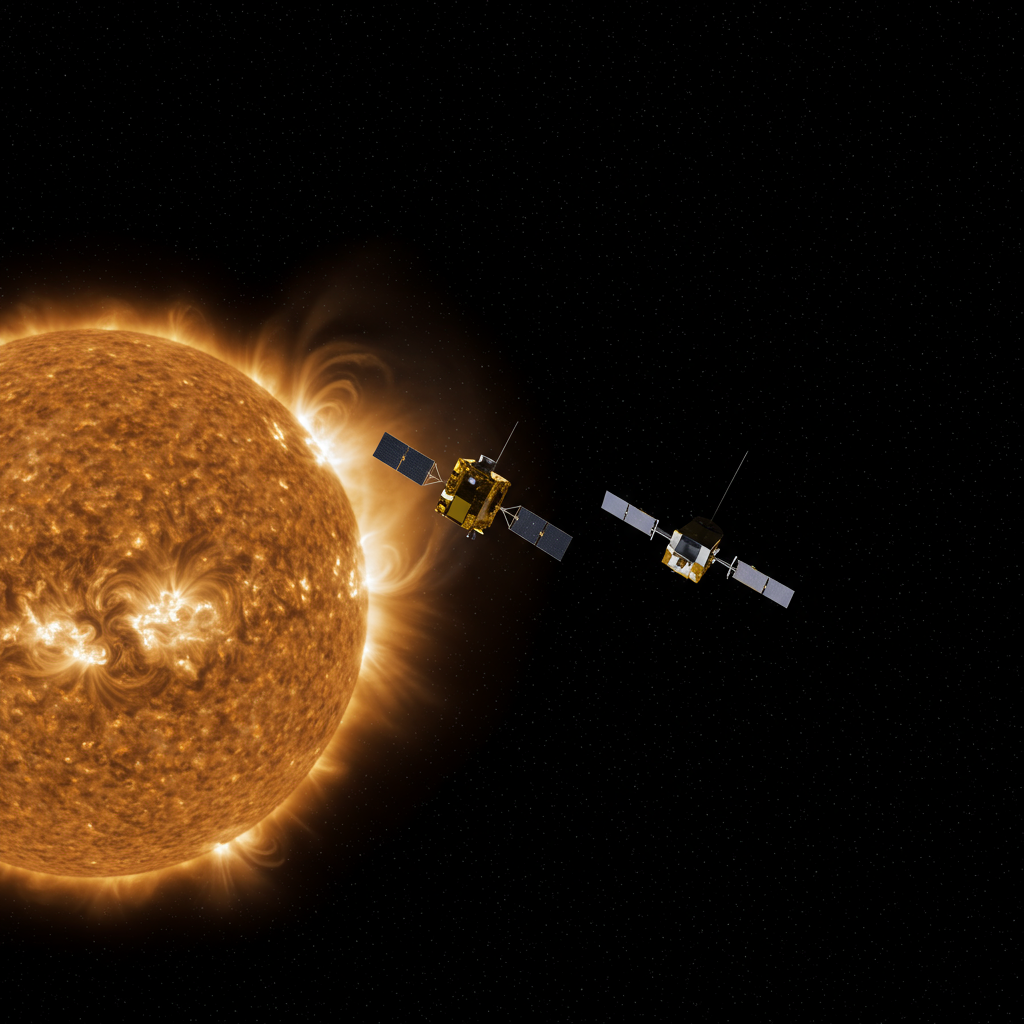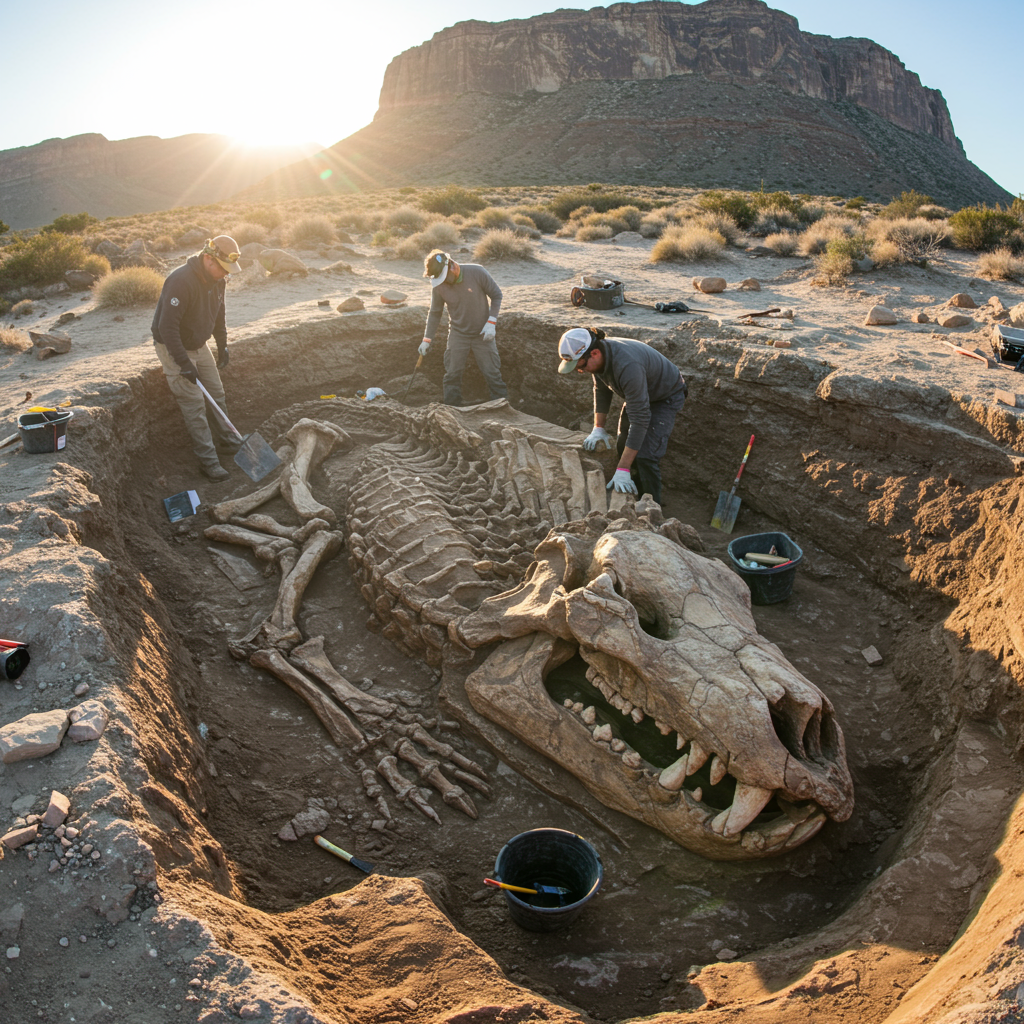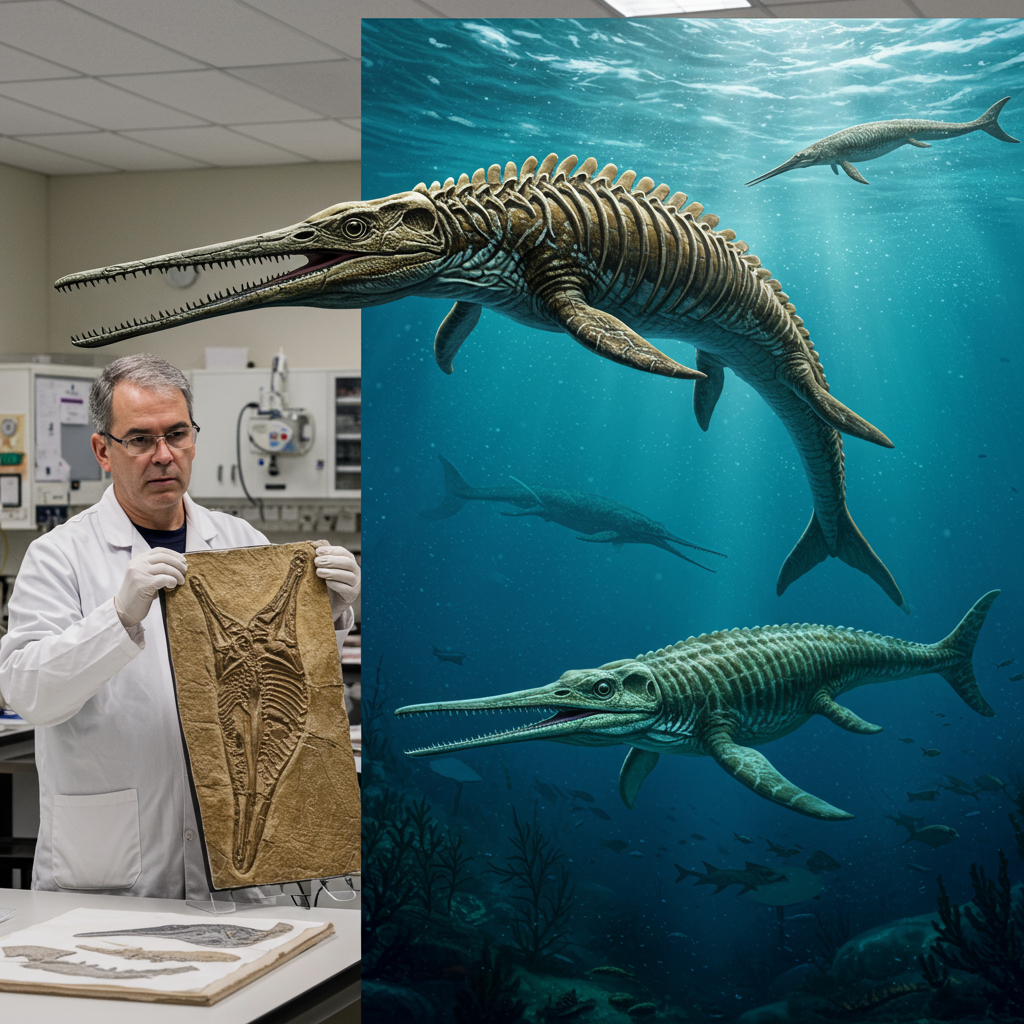The European Space Agency (ESA) has achieved a remarkable feat in space, releasing the first stunning images captured by its innovative Proba-3 mission. This mission is unique: it uses a pair of satellites flying in precise formation to create artificial solar eclipses, offering scientists an unprecedented view of the Sun’s elusive outer atmosphere, the corona.
Launched in December 2024, Proba-3 is part of ESA’s PRojects for OnBoard Autonomy series, designed to test cutting-edge technologies in orbit around Earth. Its core capability, precision formation flying, is key to its scientific goal: peering directly at the Sun’s inner corona, a region usually hidden by the star’s intense brightness.
How Proba-3 Creates an Eclipse in Space
Proba-3 consists of two small spacecraft flying just 150 metres (about 490 feet) apart.
- The Occulter Spacecraft: This satellite leads the formation and carries a 1.4-metre (4.5 feet) wide disc. It positions itself directly between the Sun and the second satellite, effectively blocking out the Sun’s bright disk.
- The Coronagraph Spacecraft: Following behind, this satellite hosts the ASPIICS (Association of Spacecraft for Polarimetric and Imaging Investigation of the Corona of the Sun) instrument, a highly sensitive coronagraph telescope.
- 3D Energetic Electron Spectrometer (3DEES): Studies electron fluxes in Earth’s radiation belts, contributing data for space weather analysis and astronaut safety.
- <a href="https://www.esa.int/EnablingSupport/SpaceEngineeringTechnology/Proba-3/Proba-3sfirstartificialsolareclipse”>www.esa.int
- www.space.com
- www.skyatnightmagazine.com
- www.dw.com
- www.newscientist.com
By maintaining this precise 150-metre separation, the Occulter casts a small, focused 8-centimetre (3.15-inch) shadow onto the ASPIICS instrument aboard the Coronagraph. This continuous, artificial eclipse blocks the overwhelming glare of the Sun, revealing the faint, ethereal corona around it.
Achieving and maintaining this precise alignment – requiring accuracy down to the millimeter over 150 meters – is a significant technological achievement. The satellites autonomously manage their position using a sophisticated suite of technologies, including star trackers, cameras, lasers, and photodetectors, making constant small adjustments with onboard thrusters.
The formation flying maneuvers occur during each orbit’s apogee, when the satellites are furthest from Earth (around 60,000 km altitude), minimizing gravitational and atmospheric disturbances.
Why Studying the Corona is Crucial
The Sun’s corona is its outermost layer, a fiery halo of superheated plasma extending millions of kilometers into space. Despite being further from the Sun’s core, the corona is dramatically hotter than the surface below – reaching over a million degrees Celsius (nearly 2 million degrees Fahrenheit) compared to the surface’s 5,500 °C (10,000 °F). This “coronal heating problem” is one of the biggest mysteries in solar physics.
Furthermore, the corona is the source of space weather phenomena that can impact Earth. It continuously streams particles as the solar wind and occasionally erupts with powerful bursts of energy called Coronal Mass Ejections (CMEs). Understanding the corona is vital for predicting and mitigating the effects of space weather on our satellites, communication systems, power grids, and even astronauts. Observing features like plasma clouds (prominences) is also key.
Overcoming Observational Challenges
Seeing the faint corona against the blinding Sun is incredibly difficult.
Natural Solar Eclipses: The Moon naturally blocks the Sun, allowing views of the corona. However, these are rare events (total eclipses occur about once every 16 months globally, but are minutes-long) and unpredictable in location.
Traditional Coronagraphs: Instruments with internal discs block the Sun. But stray sunlight bending around the disc (diffraction) obscures the crucial inner corona closest to the Sun’s surface.
Proba-3 bypasses these limitations. By placing the occulter disc 150 meters away – roughly twice the effective distance of previous space-based coronagraphs – the mission drastically reduces diffraction. This allows ASPIICS to capture clear, detailed images of the inner corona, a region previously only observable during natural total eclipses.
Crucially, Proba-3 can maintain its artificial eclipse for up to six hours during each 19.6-hour orbit. This offers a sustained, abundant stream of data compared to the brief minutes of a natural eclipse.
The First Glimpse: Unprecedented Images
Following successful precision formation flying demonstrations (achieved as early as March, leading to this imaging milestone in May 2025), Proba-3 delivered its first captivating images. Captured on dates including May 23, 2025, these initial pictures confirm the mission’s core capability.
Processed by the ASPIICS Science Operations Centre, these images are more than just pretty pictures. They provide new scientific insights, showing the inner corona captured in various ways:
Visible Light: Similar to how the corona appears to the human eye during a natural eclipse (sometimes enhanced with filters).
Coronal Green Line: Highlights the hottest regions of the plasma by observing light emitted from specific elements like highly ionized iron.
Polarised White Light: A technique used to differentiate light from the hot corona from light scattered by interplanetary dust, offering cleaner views.
The images are composites, skillfully stitched together from multiple exposures to capture the corona’s full range of brightness. Scientists reported incredibly low levels of stray light, validating the unique occulter design.
“I was absolutely thrilled to see the images,” said Andrei Zhukov, Principal Investigator for ASPIICS. “Our ‘artificial eclipse’ images are comparable with those taken during a natural eclipse. The difference is that we can create our eclipse once every 19.6-hour orbit… while total solar eclipses only occur naturally around once, very rarely twice a year.”
Damien Galano, Proba-3 mission manager, expressed pride in the team’s achievement, noting that “Having two spacecraft form one giant coronagraph in space allowed us to capture the inner corona with very low levels of stray light… precisely as we expected.” While autonomous flight has been successful, the team is working towards full autonomy without routine ground monitoring.
Beyond Imaging: Other Scientific Goals
While the artificial eclipse is Proba-3’s centerpiece, the mission also carries two other instruments:
Digital Absolute Radiometer (DARA): Measures the Sun’s total energy output, a key input for climate models.
Over its planned two-year mission, Proba-3 is expected to deliver around 1,000 hours of inner corona observations. This wealth of data will be invaluable for refining complex computer models that simulate the solar corona and predict space weather – models previously limited by a lack of observations close to the Sun’s surface. ESA has committed to an open data policy, ensuring rapid access for the scientific community.
In line with ESA’s ‘Zero Debris’ policy, the two satellites are designed to naturally deorbit within five years after their mission ends, burning up harmlessly in Earth’s atmosphere.
These first images from Proba-3 mark a significant technological and scientific milestone. By successfully creating artificial solar eclipses in space, the mission is poised to unlock long-standing mysteries of the Sun’s atmosphere and provide crucial data for understanding the space environment that affects our planet.




